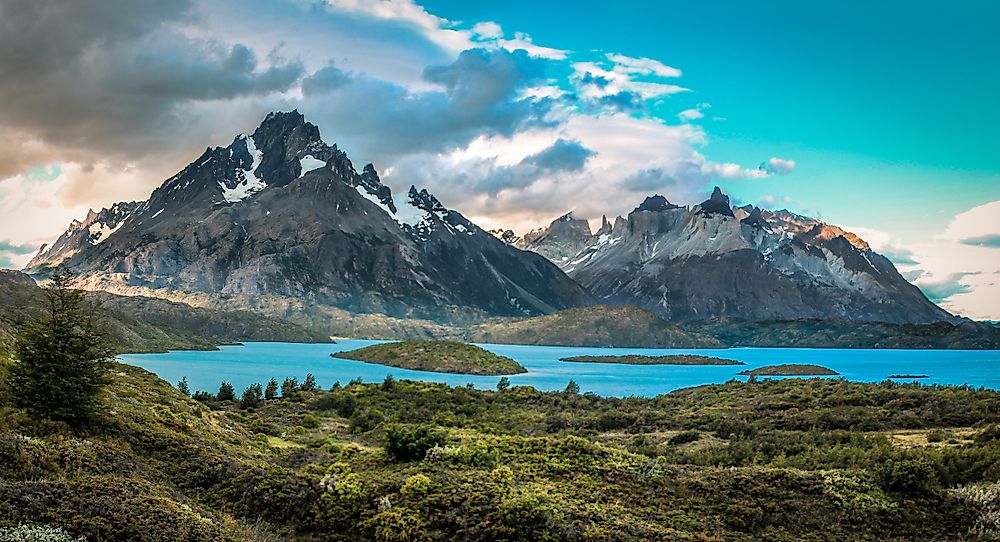Which Countries is Patagonia In?

Patagonia is one of the few places in the world with coasts in 3 oceans (the Southern Ocean, the Atlantic Ocean, and the Pacific Ocean). It is a semi-arid plateau that is situated at the southernmost end of South America. The region is made up of grasslands, desert, and pampas to the eastern side and Andes Mountains to the south. The region’s name is derived from the name "Patagon" which Ferdinand Magellan used to describe the native tribes in 1520. It’s believed that the tribes Magellan referred to as Patagons were the Tehuelches.
Political Divisions of Patagonia
Patagonia is situated inside two nations: 90% in Argentina and 10% in Chile. These two states have organized their Patagonian territory into various administrative subdivisions (communes, provinces, and regions in Chile and departments and provinces in Argentina). The Argentine Patagonia is divided into 5 provinces (Rio Negro, Chubut, Tierra-del-Fuego, Neuquen, and Santa Cruz). The southern part of Buenos Aries (Argentina) is also in Patagonia. Magallanes and Aysen regions are the only Chilean regions that are situated entirely in Patagonia. Palena province is also located in the Chilean Patagonia. The Chilean Patagonia also includes parts of Los Rios and Los Lagos regions and the Chiloe Archipelago.
Geography
Patagonia occupies an area of about 402,734 sq miles and has over 1,999,540 residents. The Barrancas and Colorado rivers form the northern boundary of Argentine Patagonia. These two rivers flow from the Andes to the Atlantic Ocean. Numerous historians and geographers believe that the Huincul Fault is the northern border of Chilean Patagonia. The Argentine Patagonia has a steppe-like plain composed of a series of thirteen abrupt terraces. These terraces are covered by vast beds of the shingle. The shingles are replaced by basalt lavas, granite, and porphyry in the Chilean Patagonia. Plants become more luxuriant and animal life more abundant in the Chilean Patagonia. Some of the depressions found in the region include River Deseao, the Senguerr, Valcheta, Maquinchao, and the Gulichu.
The volcanic eruptions that occurred during the Cenozoic era in the central region of Patagonia left the land covered with basaltic lava-caps. Basaltic massifs are the main features in some parts of Patagonia. The coastal parts of the area are composed of high cliffs that are separated from the ocean by a narrow coastal plain. Some of the lake basins in Patagonia like Lake Fagnano, Lake Argentino and numerous coastal bays like Bahia Inutil were excavated by the ice-streams.
Fauna
The most characteristic mammals in the region include Magellanic tuco-tuco, Patagonian hog-nosed skunk, cougar, guanaco, and the Patagonian fox. Patagonia is the last home for the lesser rhea and guanaco which the Tehuelches hunted for their skin. Patagonia is home to various bird species including green-backed firecrowns, Austral parakeets, upland goose, Chilean flamingo, and southern caracara among others. The Andean condor (one of the world’s largest birds) can be spotted in Patagonia. The freshwater fauna in this region is restricted as compared to other places in the southern hemisphere. The Argentine Patagonia is home to twenty-nine freshwater fish species. Eighteen of these freshwater species like temperate perches, catfish, osmeriform and characiform among others are indigenous. Other freshwater species include the aeglid crustacean.











